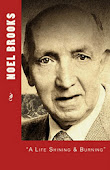The Question: How will this form - this Gothic style - contribute to a person's spiritual growth?
The Gothic style in church architecture that developed from Norman architecture between 1200 and 1500. Where Norman architecture (Early English and Decorated periods) was more box like and squat but with Gothic style came improvements in engineering science allowing buildings to be larger and to be taller (perpendicular). It is a style dominated by the large style of church known as a cathedral. These are marked by the use of the tower or spire, the arch (Gothic arch refers to the slightly pointed style), the use of buttresses (which added support to allow the church to go upwards) and large windows (often using stained or art glass). The most popular shape was the cruciform or cross shape with its parts: The Narthex (foyer or vestibule), the Nave (pew or standing area), the cloisters or ambulatories (hallways or aisles along the sides of the nave, and the Crossing or Chancel and altar areas. To each side of this end would be the two cross pieces making the cross and these would be called the transepts.
What has to be remembered is that when these churches were constructed few people could read, few had ever attended any school and all their training had come 'on the job' as apprentices or laborers. The early services were all in the Catholic tradition and the spoken parts were in Latin, a language that only a handful of people (usually only the professionals (lawyers, scholars) and the clergy might understand.
To a largely illiterate populace how do you consistently teach the lessons of the scriptures? How do you convey simple faith proclamations? The answer was found in using a multi-sensory approach to worship.
The shape of the building was a constant reminder of the sacrifice of Christ on the cross for the remission of sins. Statues, stained glass windows and carvings around the church, in its walls, and engraved on its furnishings conveyed in pictorial fashion scenes of the scriptures and symbols that taught basic doctrinal or scriptural tenets.
In the use of incense, the Old Testament sacrifices were brought to mind and a person was reminded of the fragrances used to adorn the body of the Lord after his crucifixion and before his resurrection.
The light streaming through colorful pieces of glass arranged to show the accepted symbols or representations reminded people of the love of God lighting the dark and empty places of life.
The symbols of the shield, the lily, the rose, the pomegranate, the grapevines, and others reminded people of specific teachings about the nature of God, the church and the life to come.
The use of music was a reflection of scriptural examples of praising God with song, with harp and with instruments.
The use of candles were a necessity in pre-electronic light eras but they also were used symbolically to represent the warming and guiding presence of Christ in the midst of those who gathered in his name. Christ candles on or near the altar were lit at the start of service to signify the entrance of the presence of Christ ('where two or three are gathered there I am also') and extinguished to represent they movement of the body of Christ - through the people of the church - out into the world




